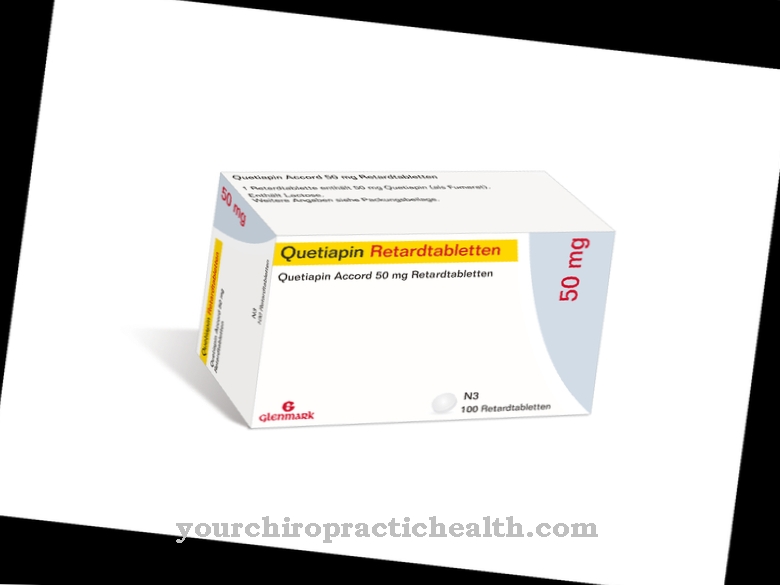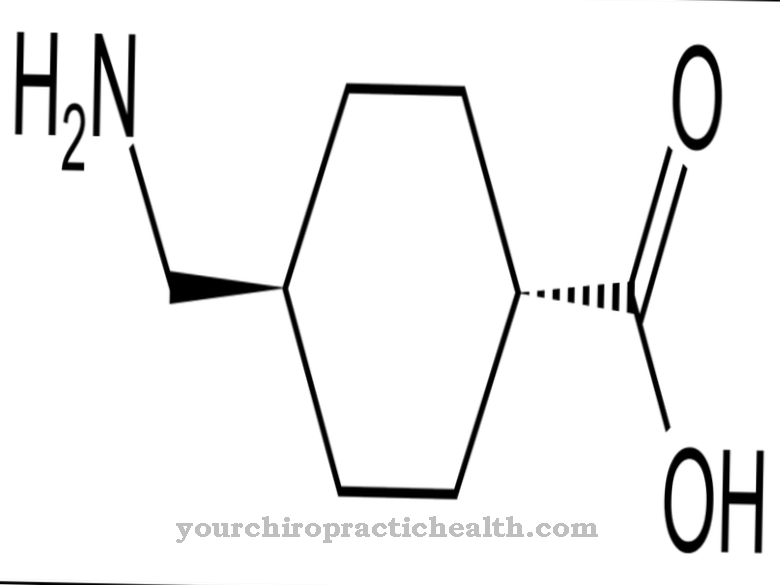With the drug Pimozide it is an active ingredient that belongs to the category of so-called antipsychotics. The drug is primarily available on the pharmaceutical market under the trade name Orap®. The drug pimozide is used in the majority of cases orally in the form of tablets. The drug is primarily used to treat psychoses with a chronic course, which are part of the schizophrenia.
What is pimozide?
The drug pimozide is distinguished by its antipsychotic properties. For this reason, it is primarily used as part of the drug treatment of mental illnesses. In most cases it is used to treat various forms of schizophrenia.
The active ingredient pimozide is often used alongside psychotherapeutic treatment. Basically, the drug is one of the so-called diphenylbutylpiperidines. In addition, it is a neuroleptic or a depot neuroleptic that is suitable for the long-term therapy of certain mental illnesses and complaints. The active ingredient pimozide is classified as highly potent.
Pharmacological effect
The antipsychotic pimozide is characterized by a special mechanism of action. In the majority of cases it is used to treat schizophrenic disorders, because pimozide is a neuroleptic that has sedating and antipsychotic effects.
In principle, neuroleptics are divided into different generations and categorized according to their neuroleptic potency. The first generation of neuroleptics includes low, medium and high potency active ingredients such as promethazine, perazine, perphenazine, melpero and fluphenazine. The second generation includes so-called atypical neuroleptics, such as olanzapine, risperidone or quetiapine.
Psychoses are related to an altered mode of action of the neurotransmitters serotonin and dopamine. In order to treat corresponding diseases with medication, it is necessary to influence and block the respective receptors in the central nervous system. Various active ingredients are available for this purpose, including the drug pimozide.
The drug acts in the central nervous system as a so-called dopamine antagonist. The substance inhibits the receptors for the neurotransmitter dopamine, which sets its antipsychotic and sedative effects.
The receptors for dopamine are blocked by a postsynaptic ingestion, as a result of which more dopamine is released presynaptically. As a result, the postsynaptic receptors are stimulated and activated.
In addition, the active ingredient pimozide also acts as an inhibitor for acid sphingomyelinase. Thus, the active ingredient pimozide can also be used against hallucinations and delusions without clouding the mind.
While taking the drug, it should be noted that pimozide may have toxicological effects. These relate primarily to the central nervous system and the cardiovascular system.
Medical application & use
Pimozide is suitable for the treatment of various mental illnesses and disorders. It is primarily used for the drug therapy of schizophrenia. These include, for example, delusions and hallucinations as well as psychoses and personality disorders.
In principle, it is possible to use the drug pimozide as part of long-term treatment. In the majority of cases, the drug Orap® is used. This is available in various dosages on the market.
At the beginning of treatment, low doses are usually used, which are gradually increased to the so-called maintenance dose. This is done under strict medical supervision. When treating adults, two to twelve milligrams are usually prescribed daily.
You can find your medication here
➔ Medicines to calm down and strengthen nervesRisks & side effects
A number of symptoms and side effects are possible while taking pimozide. All undesirable side effects are listed in the product information for the medicinal product. The frequencies with which the side effects occur are also noted there.
Basically, the symptoms vary from patient to patient while taking it. Potential side effects of the active ingredient pimozide are, for example, headaches, anxiety disorders and sleep problems. Some people also experience increased sleepiness.
In addition, antipsychotics are able to affect the cardiovascular system. For example, prolonged QT intervals, torsade de pointes tachycardia, ventricular tachycardias, and ventricular arrhythmias with ventricular fibrillation up to cardiac death have been observed. In addition, there were sudden deaths with unknown causes.
Specifically related to the active ingredient pimozide, exhaustion, erectile dysfunction and an increase in body weight appear. Sometimes pollakiuria, nocturia, and excessive sebum production also occur. Hyperhidrosis also occurs in some patients.
The drug pimozide is contraindicated if there are special diseases of the heart, an impaired electrolyte balance, as well as a depressed central nervous system.
There has been an increased mortality rate in elderly people with dementia associated with the use of pimozide. For this reason, it is not allowed to use pimozide in people with dementia. It should also be noted that serotonin reuptake inhibitors should not be taken at the same time as pimozide. These include, for example, paroxetine, sertraline and escitalopram.
During pregnancy, the use of pimozide must be carefully weighed up by the attending physician, as the effects on the unborn child are largely unknown. In addition, the active ingredient passes into breast milk, which is why it should not be administered during breastfeeding. Kidney weakness is also a contraindication.

.jpg)

























